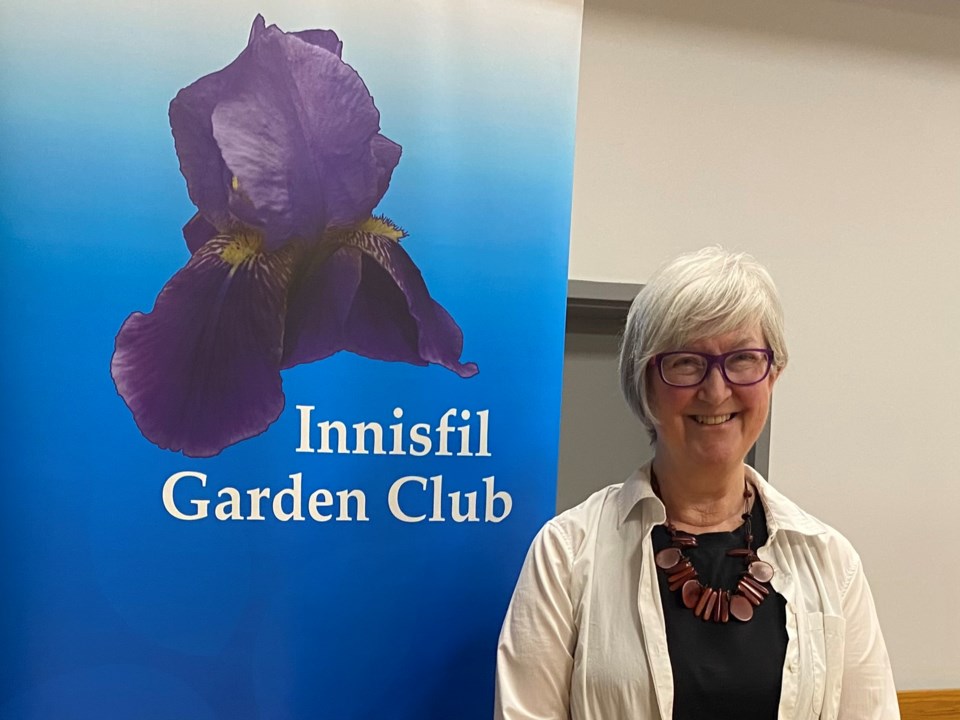Helen Battersby’s presentation, Designing with Edible Plants: A Fresh Look at a Growing Trend, gave Innisfil Garden Club members something to chew on at their monthly general meeting Monday at the Churchill Banquet Hall.
Battersby is a graduate of the landscape design program at Toronto Metropolitan University (formerly Ryerson) and has been a volunteer Toronto Master Gardener for nearly 20 years. She is also a past board member of GardenComm, the Association for Garden Communicators. She writes on torontogardens.com, an award-winning website, with her sister, Sarah, and they co-publish the Toronto & Golden Horseshoe Gardener’s Journal.
Innisfil Garden Club members enjoyed Battersby’s photos of beautiful gardens and pots that integrated vegetables with traditional ornamental plants to create not only captivating design, but also good things to eat. Beans and members of the cabbage and pea family were some examples. Photos of huge herb gardens, carefully planted for visual impact, showed beauty of design so good, you could eat it.
The foliage and flowers of garden plants can go unnoticed in their usual spaces. Battersby mentioned rhubarb is used as an ornamental and asked why it is relegated to the kitchen garden. Its huge leaves and bright red stem can add impact to any garden. In terms of lettuce, she said she saw it used as an ornamental, and it gave her new respect for it.
“Now, think about it. It’s inexpensive, it’s easy to grow, and it comes in so many shapes and colours,” she said.
A photo of a street planter from Stratford showed such plants as artichokes, chard and beets thoughtfully planted not to eat, but to admire.
Battersby also went through a range of flowering plants that are usually in a garden for their beauty but may also be eaten. She did caution to check the botanical names, not just common names, to be sure a particular variety is edible before trying it. There are some plants where the whole plant is edible and others where, for example, only the petals are good to eat.
Violets and pansies are perhaps more known edible flowers than amaranths, as she used as an example of edible ornamentals. The leaves, seeds and roots of amaranth are edible, and all parts of daylilies can be eaten. Rose petals, washed, and the white base removed can be eaten. These are just some of the plants Battersby mentioned.
Besides checking botanical names before ingesting any plant, it’s important to wash it well.
The Innisfil Garden Club meets the second Monday of the month from March to October at 7:30 p.m., with no meeting in August.
Aviva Murphy is new to gardening and is learning a lot by coming to the meetings. She said Monday’s talk was informative and the guest speakers at each meeting have different takes on gardening, their own niche.
The club’s Spring Flower Show and Tea will be open to visitors from 12 to 1:30 p.m. this Saturday at the Churchill Banquet Hall, 63233 Yonge St. The annual plant and bake sale takes place May 25 from 8 a.m. to 12 p.m. at the South Innisfil Arboretum, 1474 Shore Acres Dr., Gilford.
More information about the club can be found here.
Rosaleen Egan is a freelance journalist, storyteller, and playwright. She blogs on her website, rosiewrites.com.



